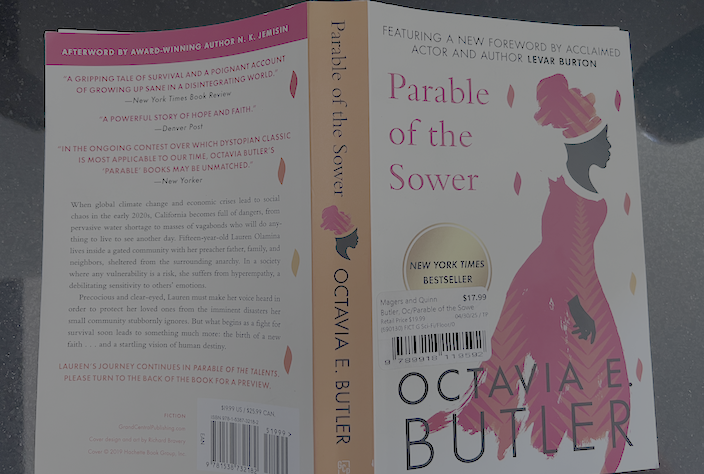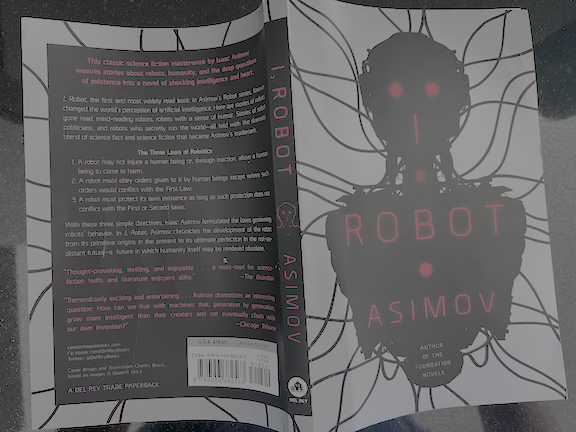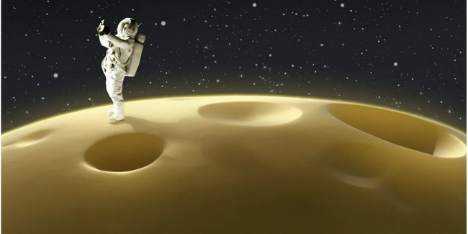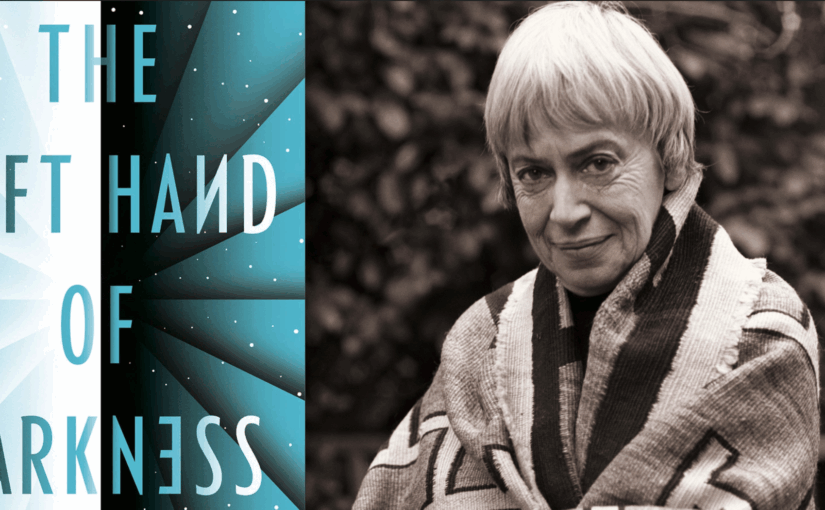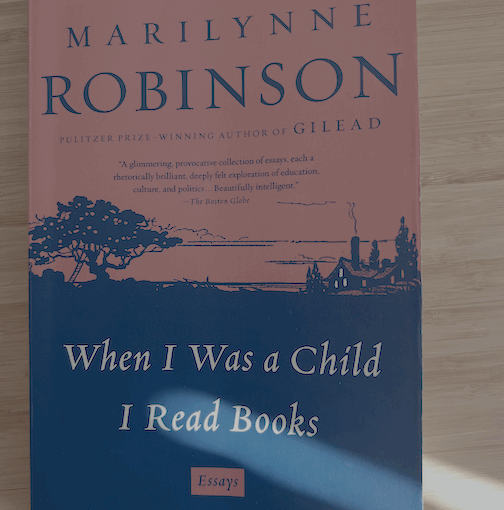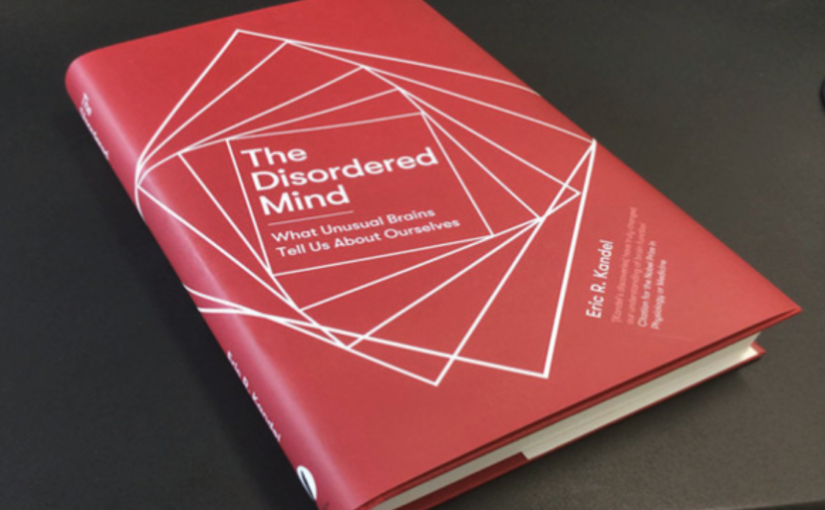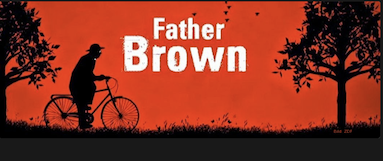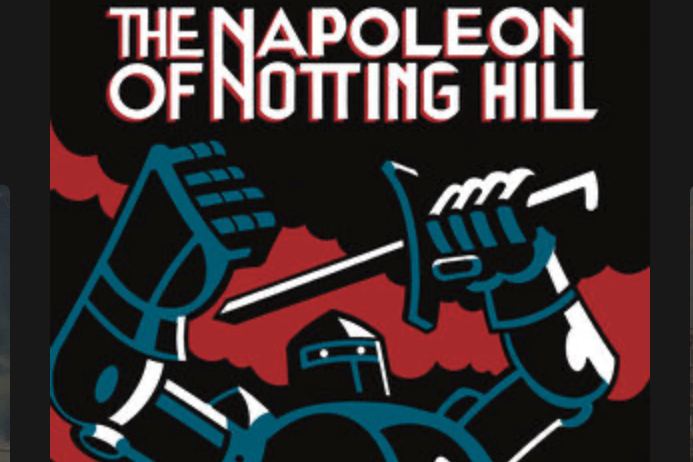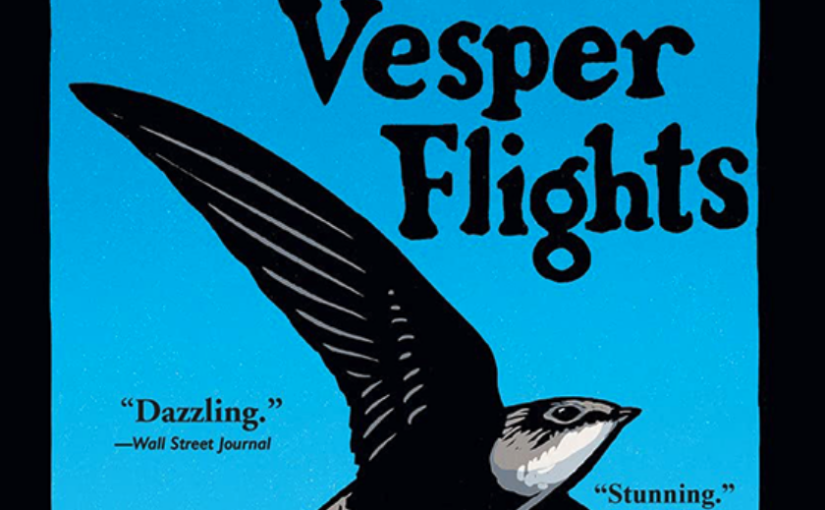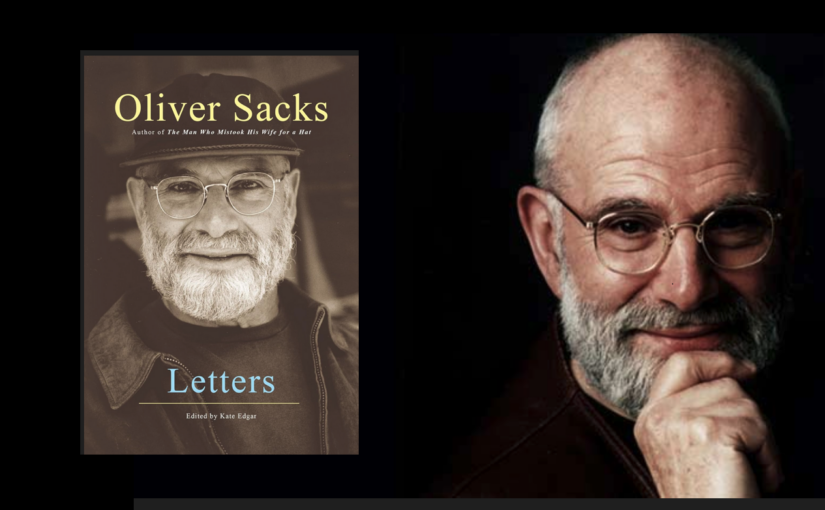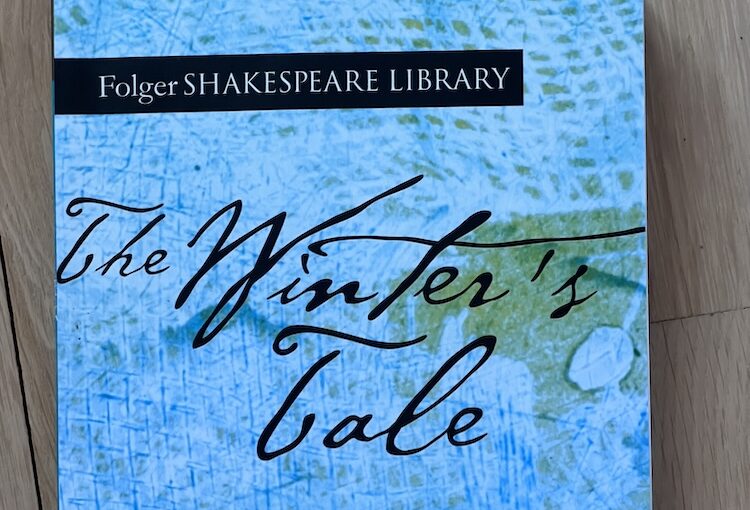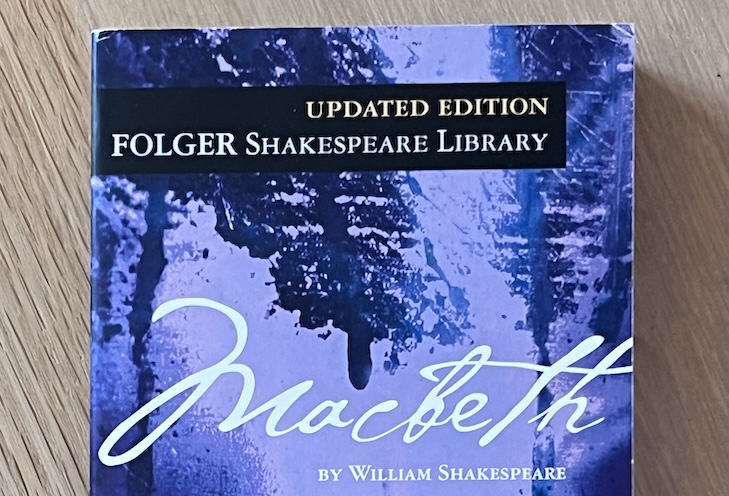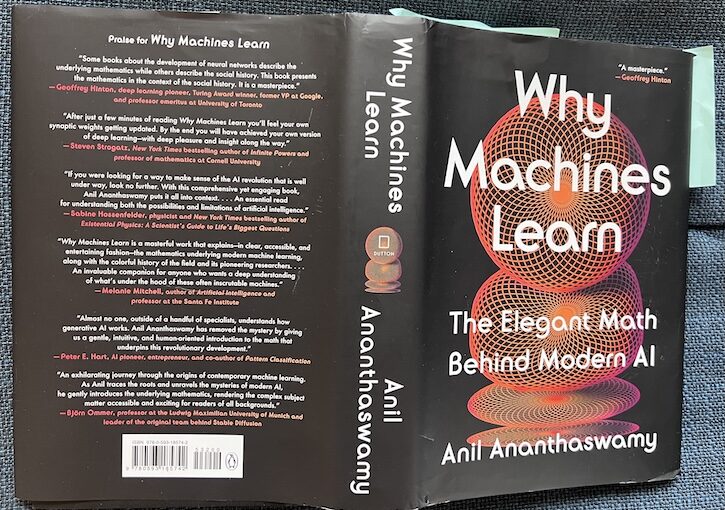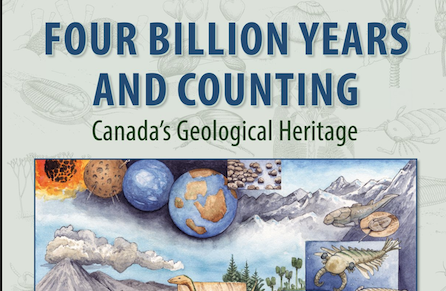January 2025
I picked up this book, probably about a year ago at the recommendation of Dan Russell. In terms of single-author collections, I’ve liked this more than anything I’ve read in years, perhaps with the exception of Loren Eisley’s essays. Regardless, Macdonald is a superb writer, and in particular her descriptions of the natural world are remarkable. I intend to seek out her other books.
I like, as well, her view of what literature ought to do:
What science does is what I would like more literature to do too: show us that we are living in an exquisitely complicated world that is not all about us. — Helen Macdonald, Vesper Flights. p. ix
Favorites
- 2. Nothing Like a Pig
- 9. Ants
- 10. Symptomatic
- 12. Winter Woods
- 18. Deer in the Headlights
- 35 Eulogy
- 38. Dispatches from the Valley
The Craft of Writing — things I’ve learned here
- Describing a Moment: “And then it happens: a short, collapsing moment.” This passage, by foregrounding the nature of the moment, and the movement from uncertainty to realization, does a superb job of highlighting and intensifying an epiphany. (In Nothing like a Pig.)
- A beautiful resonating description: “a long, yawning burr that dopplered into memory and replayed itself in dreams.“
- Use of incongruity for stream-of-consciousness. In Deer in the Headlights she does a great job of conveying the incongruity of two worlds — the forest and the highway — in a single sentence that juxtaposes glimpses of the nature of each. Similarly, in The Student’s Tale, the first sentence, with independent clauses connected by a series of “ands,” really conveys an immediate stream-of-consciousness experience, where the attention is hopping around, and making non-rational connections as it does so (.e.g, the grapes on the table are black, and so is the taxi out front).
- Transforming dynamic movement into a pattern.“The hitching curves of the gulls in a vault of sky crossed with thousands of different flightlines…” (Ants). For me, this generates a pattern — a vault of sky circumscribed by imagined flightlines – that extends over time and creates a persistent space which frames other happenings…
1. Nests
This essay describes nests. She begins with her feelings about nests develop when she was a child, and encountered them in her yard. She then goes into the present, and reflects more on this than their meanings.
*2. Nothing like a Pig
This essay describes an encounter with a boar. She reflects both on the boar, and more in general on animals in particular, and how the conception of an animal differs from the reality of the animal
Then it happens: a short, collapsing moment as sixty or seventy yards away something walks fast between the trees, and then the boar. The boar. The boar.
– Vesper Flights, Helen Macdonald, p 11.
A great bit of writing. The “short, collapsing moment.” The uncertainty about distance — “sixty or seventy yards” — and what she is seeing — “something.” The revelation: “and then the boar.” And the repetition: “The boar. The boar.“
3. Inspector Calls
A very nice short piece about an encounter with autistic boy, who is visiting her flat with his parents. In particular he connects with her bird and the bird with him.
4. Field Guides
“Field guides made possible the joy of encountering a thing I already knew but had never seen.”
5. Terkels Park
An essay on the place where she grew up. A bit nostalgic, but it was unusual, and had interesting reflections, so I found it worth reading. Some very nice writing:
I could lie awake in the small hours and hear a single motorbike speeding west or east: a long, yawning burr that dopplered into memory and replayed itself in dreams.
— ibid. p 12
My eyes catch on the place where the zoetrope flicker of pines behind the fence gives way to a patch of sky with the black peak of a redwood tree against it and the cradled mathematical branches of a monkey puzzle, and my head blooms with an apprehension of lost space,
— Ibid. p 13
6. High-Rise
About watching migrating birds at night from the top of the Empire State Building. An interesting discussion of how birds migrate — the height and speeds at which they fly, and the way they navigate — and the problems that the lights and tall buildings of the city give them.
7. The Human Flock
“Overhead a long wavering chevron of beating wings is inked across the darkening sky.“
Recounting the observation of large flocks of migrating cranes, and continuing to a discussion of the dynamics of swarms and murmurations. “Turns can propagate through a cloud of birds at speeds approaching 90 miles an hour…” This segues into a concluding comment on refugees, and a plea to regard them as individuals rather than masses.
8. The Student’s Tale
An account of meeting a student who is a refugee and spending time in camps…
A great opening sentence:
There’s a window and the rattle of a taxi and grapes on the table, black ones, sweet ones, and the taxi is also black and there’s a woman inside it, a charity worker who befriended you when you were in detention, and she’s leaning to pay the driver and through the dust and bloom of the glass I see you standing on the pavement next to the open taxi door and your back is turned towards me so all I can see are your shoulders hunched in a blue denim jacket.
— The Student’s Tale, Vesper Flight, Kate Macdonald, p. 53
I think this is a marvelous stream-of-consciousness sentence, with the writers attention shifting from taxi to grapes to taxi to the woman and then to the student whose shoulders are hunched. The second person is also very effective.
*9. Ants
About the mating flights of ants, and the birds that prey upon them. Also reflects on the power of scientific understanding to enhance the beauty of things, rather than detract: “…it’s things I’ve learned from scientific books and papers that are making what I’m watching almost unbearably moving.”
A red kite joins the flock, drifting and tilting through it on paper-cut wings stamped black against the sky.
[…]
The hitching curves of the gulls in a vault of sky crossed with thousands of different flightlines, warm airspace tense with predatory intent and the tiny hopes of each rising ant.
— Helen Macdonald, Vesper Flights, p. 63
*10. Symptomatic
Discusses her experiences with migraines. The writing is beautiful and ranges from describing the onset and symptoms of her migraine, to the way in which she has come to live with them. Ends with a partial analogy to earth undergoing climate change…
I was busily signing books when a spray of sparks, an array of livid and prickling phosphenes like shorting fairy lights, spread downwards from the upper right-hand corner of my vision until I could barely see through them.
—Helen Macdonald, Vesper Flights, p. 66
11. Sex, Death, Mushrooms
On mushroom hunting: “It is raining hard, and the forest air is sweet and winey with decay.“
The air is damp and dark in here. Taut lines of spider silk are slung between their flaking trunks; I can feel them snapping across my chest. Fat garden spiders drop from my coat on to the thick carpet of pine needles below.
—Helen Macdonald, Vesper Flights, p. 80
I like feeling the snapping, and the spiders dropping from her coat to the forest floor. It animates the scene, and tells us she is moving through it.
* 12. Winter Woods
Beginning with her custom of walking in the woods every New Year’s day, she reflects on the things that are distinctive about forests in winter. From the revelation of the landscape, to the bark textures and angled branches of leafless trees, to the sometimes transitory life that becomes evident. Winter woods, she suggests, are full of potential:
So often we think of mindfulness, of existing purely in the present moment, as a spiritual goal. But winter woods teach me something else: the importance of thinking about history. They are able to show you the last five hours, the last five days, the last five centuries, all at once. They’re wood and soil and rotting leaves, the crystal fur of hoarfrost and the melting of overnight snow, but they are also places of different interpolated timeframes. In them, potentiality crackles in the winter air.
—ibid., p. 85
13. Eclipse
On viewing a solar eclipse. The phenomenology of the event, but also the deep, irrational, fundamental, emotional impact. The essay is reminiscent of Joan Didion’s essay, and in particular the way in which the fading daylight alters the colors in ways that cast the landscape in an alien light. It ends, beautifully, with a description of the light returning, and the emotions that brings.
14. In Her Orbit
A description of a trip with an astrobiologist to study extremophiles at very high altitudes in the Andes. Some beautiful descriptions of desolate and unworldly environments.
15. Hares
A description of the phenomenon of boxing hares, their place in English thought and mythology, and their decline due to environmental change.
16. Lost, But Catching Up
A very short essay description her glimpse of a hound that was trying to catch up to the pack during a fox hunt.
17. Swan Upping Nestboxes
About the English tradition of “Swan Upping,” and her experience observing the activity; all interladen with reflections on the role of tradition and its uneasy releationship to Brexit, which had recently occurred.
18. Deer in the Headlights
Discusses her changing feelings about deer, from initially wishing to known nothing about them and valuing them as a source of surprise and delight, to a desire to understand them. She says it better, though:
Deer occupy a unique place in my personal pantheon of animals. There are many creatures I know very little about, but the difference with deer is that I’ve never had any desire to find out more. They’re like a distant country I’ve never wanted to visit. I know the names of different deer species, and can identify the commonest ones by sight, but I’ve always resisted the almost negligible effort it would take to discover when they give birth, how they grow and shed their antlers, what they eat, where and how they live. Standing on the bridge I’m wondering why that is.
– Helen Macdonald, Vesper Flights, p. 141
As the title suggests, much of the essay is about deer-vehicle collisions; and also about how people react to them, in the moment, and, sometimes in cruel ways, on the internet. It is a complex essay. It doesn’t really speak to me, but there are a lot of great turns of phrase and passages.
Here is how the essay begins:
The deer drift in and out of the trees like breathing. They appear unexpectedly delicate and cold, as if chill air is pouring from them to the ground to pool into the mist that half obscures their legs and turning flanks. They aren’t tame: I can’t get closer than a hundred yards before they slip into the gloom.
– Helen Macdonald, Vesper Flights, p. 140
And here is a passage I admire for the way it highlights the incongruity of the two worlds: nature and the highway. It moves from the forest, to the road, to the forest, to the road, to her standing, embodied, on the bridge.
For a while the road doesn’t seem real. Then it does, almost violently so, and at that moment the bridge and the woods behind me do not. I can’t hold both in the same world at once. Deer and forest, mist, speed, a drift of wet leaves, white noise, scrap-metal trucks, a convoy of eighteen-wheelers, beads of water on the toes of my boots and the scald of my hands on the cold metal rail.
– Helen Macdonald, Vesper Flights, p. 141
19. The Falcon and the Tower
She is watching birds — falcons — in an abandoned industrial plant in Dublin. The essay discusses falcons, and how they have adapted to living in cities and their infrastructures. Moves from their behavior and natural history, to the ways in which people have viewed them, to their change in habitat given the ‘advance’ of civilization. Ends with a reflection on the brevity of life, and a note of hope.
20. Vesper Flights
The essay that gives the collection a title. Begins with her finding a dead Swift and not knowing what to do with it. Segues into a description of Swifts and how they are somewhat “magical” — “the closest things to aliens on earth.” After describing their natural history, describes the phenonmenon of “vesper flights,” where they gather in the evening and fly up to 8,000 feet. She describes how this behavior was discovered, and goes through the history of this behavior being observed and understood. Interleaved with this is her accounts of how, as a small child, she sought comfort in the evening (her own private vespers) by imagining herself as embedded in layers of the earth below her and the atmosphere above her. This comes together as we learn that vesper flights, for Swifts, help them take account of where they are and the oncoming weather conditions, and as Macdonald reflects on ways in which she (we) can adopt practices that enable us to locate ourselves and think about what comes next.
21. In Spight of Prisons
A very nice, short essay about her annual practice of going to see glowworms in a quarry.
* 22. Sun Birds and Cashmere Spheres
About her efforts to observe Oriels at the single place in Britain where they can still be found. Over time, their habitat is degraded, and at last there is only one… but, at the last moment, she is able to get a glimpse of it. She has a lovely sentence where she describes the song (or a song) or the oriel: “Wo-de-wal-e, wo-de-wal-e, a phrase like the curl of the cut ends of a gilded banner furling over the page of an illuminated manuscript.“
In this essay, she excels at capturing the fragmentary, mosaical nature of perception.
…what I saw became something like looking into a Magic Eye picture. Here was a circle, and in it a thousand angles of stalk and leaf and scraps of shade at various distances, and every straight stalk or branch was alternately obscured and revealed as the wind blew. I began to feel a little seasick watching this chaos, but then, as magically as a stereogram suddenly reveals a not-very-accurate 3D dinosaur, the muddy patch just off centre resolved itself into the nest.
[…]
Finally, I saw my oriole. A bright, golden male. It was a complex joy, because I saw him only in stamped-out sections, small jigsaw pieces of a bird, but moving ones, animated mutoscope views. A flick of wings, a scrap of tail, then another glimpse – this time, just his head alone – through a screen of leaves. I was transfixed. I had not expected the joyous, extravagant way this oriole leapt into the air between feeds, the enormously decisive movements, always, and the little dots like stars that flared along the edge of his spread-wide tail.
– Helen Macdonald, Vesper Flights, p. 177 & 179
23. The Observatory
About swans, beginning with an odd experience she had with one approaching her, and sitting beside her, in a moment of grief.
24. Wicken
About a visit to a nature preserve with her young niece, and her niece’s puzzlement about why there were so many animals here — ‘did they bring them from a zoo?’ Reflections on the shift from a time when nature and animals were all around us, to the present, when they are mostly found in special preserves.
25. Storm
A short essay describing a thunderstorm, and also reflecting on storms as metaphors, in particular, in this essay, for the onset of Brexit.
26. Murmurations
Begins with getting a passport replaced at the last minute, and then moves to how birds were seen during war time, and the rise and evolution of the notion of birdwatching.
27. A Cuckoo in the House
On cuckoos, how people perceive them, and in particular a rather eccentric British intelligence agent — Maxwell Knight — who raised a cuckoo. Didn’t grab me, but others might well find it a fascinating tale.
28. The Arrow-Stork
About tracking migrating birds. Makes this interesting point:
Projects like this give us imaginative access to the lives of wild creatures, but they cannot capture the real animals’ complex, halting paths. Instead they let us watch virtual animals moving across a world of eternal daylight built of a patchwork of layered satellite and aerial imagery, a flattened, static landscape free of happenstance. There are no icy winds over high mountain passes here, no heavy rains, soaring hawks, ripening crops or recent droughts.
– Helen Macdonald, Vesper Flights, p. 217
29. Ashes
About destroying diseased trees, beginning with elms with Dutch Elm disease in her childhood, and ending with ash trees and the emerald ash borer.
30. A Handful of Corn
About feeding animals. Starts with a nice anecdote about an elderly woman who put out corn to attract badgers at night. Continues into the practice of feeding animals, and makes the interesting point that there are some animals it is socially acceptable to feed, and others — foxes, rats, pigeons — that it is not.
31. Berries
This short essay begins with her decorating a Christmas tree, and sprucing up its decorations with berries from outside, but feeling slightly guilty because berries exist as food for birds. Segues into natural history of both birds and berries.
A great bit of description: “…like a gravity stricken whirlwind, a pack of fat birds swirled down from the blank sky…“
32. Cherry Stones
About the return of hawfinches to Britain, the excitement it engenders, and the ways in which their behavior seems to be changing vis a vis what habitat they prefer. Also touches on the blurring of natural history and national identity.
33. Birds, Tabled
About the practice of capturing and keeping birds, which in England is mostly done by the working classes, and which is, it seems, looked down upon by others. She discusses the practice, how bird keepers feel about it and their birds, and the class differences and that this highlights. Interesting.
34. Hiding
An interesting piece about hides (what we in the U.S. call “blinds”). It touches both on the aims and experience of watching animals from blinds, as well as the human experience within blinds.
* 35. Eulogy
A eulogy for a friend: a description of the her friend is interleaved with a night outing to see nightjars. A beautiful piece of writing.
The essay begins with a description of the outing, setting out while it is still light, but with the darkness coming:
As night falls, our senses stretch to meet it. A roebuck barks in the distance, small mammals rustle in the grass. The faintest tick of insects. The scratchy, resinous fragrance of heathland grows stronger, more insistent. As we pass clumps of viper’s bugloss we watch the oncoming night turn their leaves blacker, their purple petals bluer and more intense until they seem to glow. The paths become luminous trails through darkness. White moths spiral up from the ground, and a cockchafer zips past us, elytra raised, wings buzzing.
– Helen Macdonald, Vesper Flights, p. 255
After this, she makes the connection to her friend: “Soon all color will be gone. The thought is a hard one.” And then, after writing about him: “Now, watching the slow diminishment of sense and detail around me, I’m thinking of Stu and what is happening to him, thinking of his family, of what we face at the end of our lives’ long summers when the world parts from us, of how we all, one day, will walk into darkness.“
A somber essay, but ending with a note of, not hope, but acceptance. Stu says, “It’s OK. It’s OK. It’s not hard.”
It’s OK, he said. It’s not hard. Those are the words I am remembering as we walk onward, as the minutes pass, until night thickens completely and there is starlight and dust and the feel of sand underfoot. It’s so dark now I cannot see myself. But the song continues, and the air around us is full of invisible wings.
– Helen Macdonald, Vesper Flights, p. 259
36. Rescue
An account of a visit to the house of a friend who rescues and rehabilitates swifts. It begins with her friend feeding nestlings, and ends with the release of a swift, and a haunting description of the swift’s transformation as it is about to take to the sky.
37. Goats
A brief, funny story about her, her dad, and pushing goats. Wouldn’t call it an essay though.
* 38. Dispatches from the Valleys
A curious essay centered around her experiences in her first job out of college, working on a falcon conservation-breeding farm. She describes what it was like — it sounded unpleasant to me, but she clearly got to do many things she loved and valued. She describes what led her to leave the farm, and does a good job of creating tension by naming two incidents, first “the dreadful incident with the ostrich,” and then “the cattle on the hill,” and describing each played out.
The ostrich incident — euthanasia of a horribly injured bird — was straightforward, if unpleasant. The “cattle on the hill” incident is quite strange: it involves her spending hours sneaking up on them, and then jumping up and scaring them into stampeding, though she does not know why.
At the end of the essay, though, she recounts an epiphany, and, for me, it resolves not just the ‘cattle on the hill’ incident, but the whole essay:
And then I thought of the day I stalked the steers on the hill and it resolved into perfect clarity. For I had seen myself as one of those steers, one of a feral and uncared-for herd enjoying life in the middle of nowhere, not thinking about what would happen in the future, and not much worried about it, but knowing deep down that one day I was headed for the abattoir. There would be no escaping the deep sea for the shore. And my stalking and shouting was not mindless. It had been an inchoate attempt to knock them out of their contented composure. It had been a warning to make them run the hell out of there, because the valley we were all in was dark and deep and could have no good end.
– Helen Macdonald, Vesper Flights, p. 282
39. The Numinous Ordinary
An interesting essay with some nice passages in it, but it didn’t really resonate with me.
40. What Animals Taught Me
Discusses the author’s changing conceptions of and relationships to animals. She liked caring for them, as a child, but came to recognize that was about her feeling good about herself, rather than about the animals. As she grew older, she found that an intense focus on animals was a way to make herself disappear, to allow herself into a separate world that did not contain the difficulties she was faced with. Later, with respect to falconry, she speaks about how she learned that the other party in a relationship might see it very differently — a lesson she was slow to apply to humans. The “deepest lesson animals have taught me is how easily and unconsciously we see other lives as mirrors of our own.” And “None of us sees animals clearly. They are too full of the stories we have given them.“
Towards the end of the essay, speaking of a rook, she comments that now what she enjoys is not imagining that she can feel what the rook feels, know what it knows, but that it’s slow delight in knowing that she cannot.
As it passes overhead, the rook tilts its head to regard me briefly before flying on. And with that glance I feel a prickling in my skin that runs down my spine, my sense of place shifts, and the world is enlarged. The rook and I have shared no purpose. We noticed each other, is all. When I looked at the rook and the rook looked at me, I became a feature of its world as much as it became a feature of mine. Our separate lives coincided, and all my self-absorbed anxiety vanished in that one fugitive moment, when a bird in the sky on its way somewhere else sent a glance across the divide and stitched me back into a world where both of us have equal billing.
– Helen Macdonald, Vesper Flights, p. 299
# # #
Views: 7

